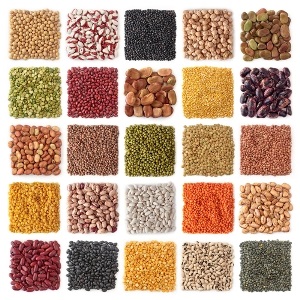
You may be forgiven for thinking “How boring, we’ve heard this all before!” Yes, you may well be aware of some of the facts about dietary factors in the development of type 2 diabetes mellitus (T2 DM) – but, there has been a lot of new research, giving us a much better idea of the factors involved in both the development and control of T2 DM.
A lecture titled “Dietary Factors for the Prevention of Diabetes Mellitus” presented recently by Prof Renée Blaauw at SASA’s Nutrition in NCD Prevention Roadshow, provided many new insights into a metabolic disease that is rapidly increasing all over the world. (NCDs are “Non-Communicable Diseases”, which include heart disease, cancer and diabetes.)
Chronic inflammation
According to Prof Blaauw, T2 DM is associated with chronic, low-grade inflammation, particularly in fat tissue. Signals from the inflamed tissue interfere with the working of insulin and promote insulin resistance (IR), which is regarded as the forerunner of T2 DM. When this type of inflammation occurs, thin and obese individuals react differently.
Read: Inflammation important factor in type 2 diabetes
Thin people produce macrophages (a type of white blood cell that engulfs and removes harmful components in the body), which have anti-inflammatory effects, while the fat tissue of overweight and obese people produces inflammatory cytokines (proteins that either regulate or interfere with cell signalling). The fact that cytokines can either produce a positive or negative effect, particularly when inflammation is present, has been linked to the development of IR which, if not counteracted by diet, weight loss and exercise, can progress to T2 DM.
Strategies to reduce inflammation in the body include weight loss and eating plenty of protective vegetables, fruits and whole grains.
Protein intake and T2 DM
Prof Blaauw conceded that research indicates that high-protein intake does promote weight loss which, in the short term, improves glucose control. Long-term studies are, however, are not as positive regarding a high protein intake.
In a 12-year follow-up study which included more than 27,000 subjects, it was found that high-protein diets caused an increased risk of T2 DM. This result is a direct contradiction of the message proposed by promoters of high-protein, high-fat slimming diets who maintain that such diets will reduce the risk of T2 DM.
Read: The dangers of high-protein slimming diets
The study which was conducted in Malmö, Sweden, with 27,140 subjects aged between 45 and 74 years over 12 years, collected dietary data to determine the macronutrient intake (i.e. protein, fat and carbohydrate) of the population. When protein intake was increased (thus replacing fat or carbohydrate), the risk of developing T2 DM increased by 67% in the group of subjects eating the most protein (mainly processed meats and eggs).
Interestingly, the study participants who ate more carbohydrates or fats did not show this increased risk of T2 DM, which could possibly explain the current switch suggested by the protein-promoters in this country, from high-protein, to high-fat intakes to lose weight.
The study conducted by Ericson and her team found that the subjects who ate more fibre-rich bread and cereals (grains) were less likely to develop T2 DM, which lead them to suggest: “Replacing protein with carbohydrates may be favourable, especially if fibre-rich breads and cereals are chosen as carbohydrate sources.” This recommendation was supported by a meta-analysis conducted by researchers in Norway who consulted 16 studies that investigated the influence of various types of grains on the risk of developing T2 DM.
Fibre and reduced risk of type 2 diabetes mellitus
In view of the positive findings reported by the Norwegian researchers, Prof Blaauw identified another meta-analysis conducted in China that combined the results of 17 other studies to determine if dietary fibre can help to protect us against T2 DM.
In total these combined study results showed that dietary fibre can decrease the risk of developing T2 DM by 19%, and that cereal fibre and insoluble fibre (as found in unprocessed wheat for example) can lower the risk by 23% and 25%, respectively.
Read: Fill up on fibre
Yao and co-workers identified what is called a “dose-response effect” for dietary fibre. A dose-response effect means that as the dose of a beneficial compound (which can be a food, a medication, a nutrient) increases, so does the beneficial effect. In the case of the study by Yao et al, people eating 15 g of dietary fibre a day had a 2% reduced risk of developing T2 DM, while people consuming 35 g of dietary fibre a day reduced their risk of T2 DM by 34%.
How can we increase our dietary fibre intake?
While it appears to be difficult to include this much dietary fibre in our modern diets, it is possible that such an intake mirrors the dietary patterns of our ancestors and of some rural people who still eat a diet rich in unprocessed grains. Such diets also contain very little protein of animal origin. These populations had/have a low incidence of T2 DM, which is often ascribed to their intake of unprocessed grains, wild vegetables, roots, nuts and fruits.
It may not possible to return fully to the eating habits of our ancestors, no matter how popular the Paleo Diet may be, but we can make a concerted effort to increase our dietary fibre intake by eating high-fibre foods as often as possible. Try to select unprocessed foods that are rich in dietary fibre and low in fat and salt.
Read: The Paleo diet – good health at a price
Legumes (cooked or canned dry beans, peas, lentils, soya and products made from soya beans), home-cooked oats, quinoa, brown rice, unsifted wheat, sorghum, millet and maize, breads with a high-fibre content, and oat or wheat bran which can be added to other cereals to increase the dietary fibre content, should help you achieve an intake of 35 g of dietary fibre a day.
Slowly increase dietary fibre
It would, however, not be wise to change from a typical Western diet (based on highly processed “white” grains and cereals) to traditional grains overnight, as this is guaranteed to cause stomach upsets and may put you off dietary fibre for life.
Start off slowly by introducing one item of high-fibre food to your diet a week, such as 1 teaspoon of wheat bran added to your breakfast cereal or fruit juice or smoothie. Continue for 1-2 weeks until your digestive tract and its population of microorganisms have adjusted and can handle the extra 5 g of dietary fibre a day.
Then add a bit more, such as a small serving of legumes which, when properly prepared, should not cause bloating. (Soak overnight and discard the water; boil up in water and discard; and then boil again in water till soft; allow the legumes to soak up sufficient water with the second cooking to be soft and digestible).
Read: Bran intake helps with diabetes
By slowly adding fibre-rich foods to your diet over a period of 2-3 months you will reach the desired level of intake, and in most cases the transition will be painless.
If you develop symptoms of discomfort and bloating when you increase your dietary fibre intake, despite a careful, gradual introduction, you may be intolerant or allergic to soya or gluten. In such cases it is important to have tests done to confirm that you are allergic/intolerant to a food linked to a high-fibre intake, and to consult a registered dietician to assist you with a diet that avoids the offending foods without causing any other complications.
Next week we will carry on to discuss further dietary aspects that can protect us against T2 DM.
Fibre-rich grains tied to lower diabetes risk
References:
- Aune D et al, (2013). Whole grain and refined grain consumption and the risk of type 2 diabetes: a systematic review and dose-response meta-analysis of cohort studies. Eur J Epidemiol, 28(11): 845-58.
- Blaauw R (2015). Dietary Factors for the Prevention of Diabetes Mellitus. Lecture presented on 12 February 2015, at the SASA Nutrition in NCD Prevention Roadshow, Pretoria.
- Ericson U et al, (2013). High intakes of protein and processed meat associated with increased incidence of type 2 diabetes. Br J Nutr, 109(6): 1143-53.
- Yao B et al, 2014. Dietary fibre intake and risk of type 2 diabetes: a dose-response analysis of prospective studies. Eur J Epidemiol, 29(2):79-88.
Image: Pulses and legumes from Shutterstock




 Publications
Publications
 Partners
Partners











